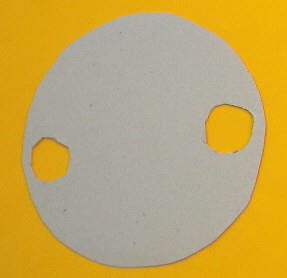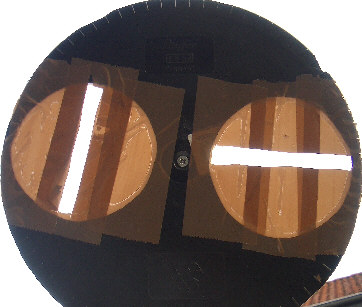
The Hartmann mask is a simple and cheap tool to focus a telescope for photography. Take a cardboard disk with the diameter of the telescope's optic, cut two (or three) holes in it and place it in front of the telescope. If the telescope is out of focus then two stars in a certain distance of each other are seen for any single star. When approaching focus the distance of the two star images decreases until they meet in the focus and only single stars can be seen. This method is described for example by
Jerry Lodriguss
.
What sounds to be very easy is quite tricky in practice. Near the focus the two star images melt to an oblong star. The nearer the focus the more difficult it is to decide whether the star image is still oblong or round. Bad seeing makes the whole thing even worse. When you see that the star image becomes oblong again then you know that you just passed the focus. Now try again and don't forget the hystheresis when focussing with a SCT. Some smart people thought of improvements. Ron Wodaski describes a modification of the Hartmann mask that uses two triangular holes instead of the round holes. Since one of the triangular holes is rotated 60 degrees the star image in the focus shows six spikes.
Antonio Fernandez
describes and illusrtrates this method nicely.

The pictures of Antonio Fernandez show that the difference of the star images of "nearly in focus" and "in focus" is very small and again difficult to determine, especially with bad seeing. But the fact that the shape of the holes determines the shape of the star image at the focus lead me to the idea to use a vertical and a horizontal slit instead of the two triangular or round holes. I expected to see a cross at the focus. I closed the openings in my Hartmann mask with tape and cut two slits in it as can be seen on the left.

